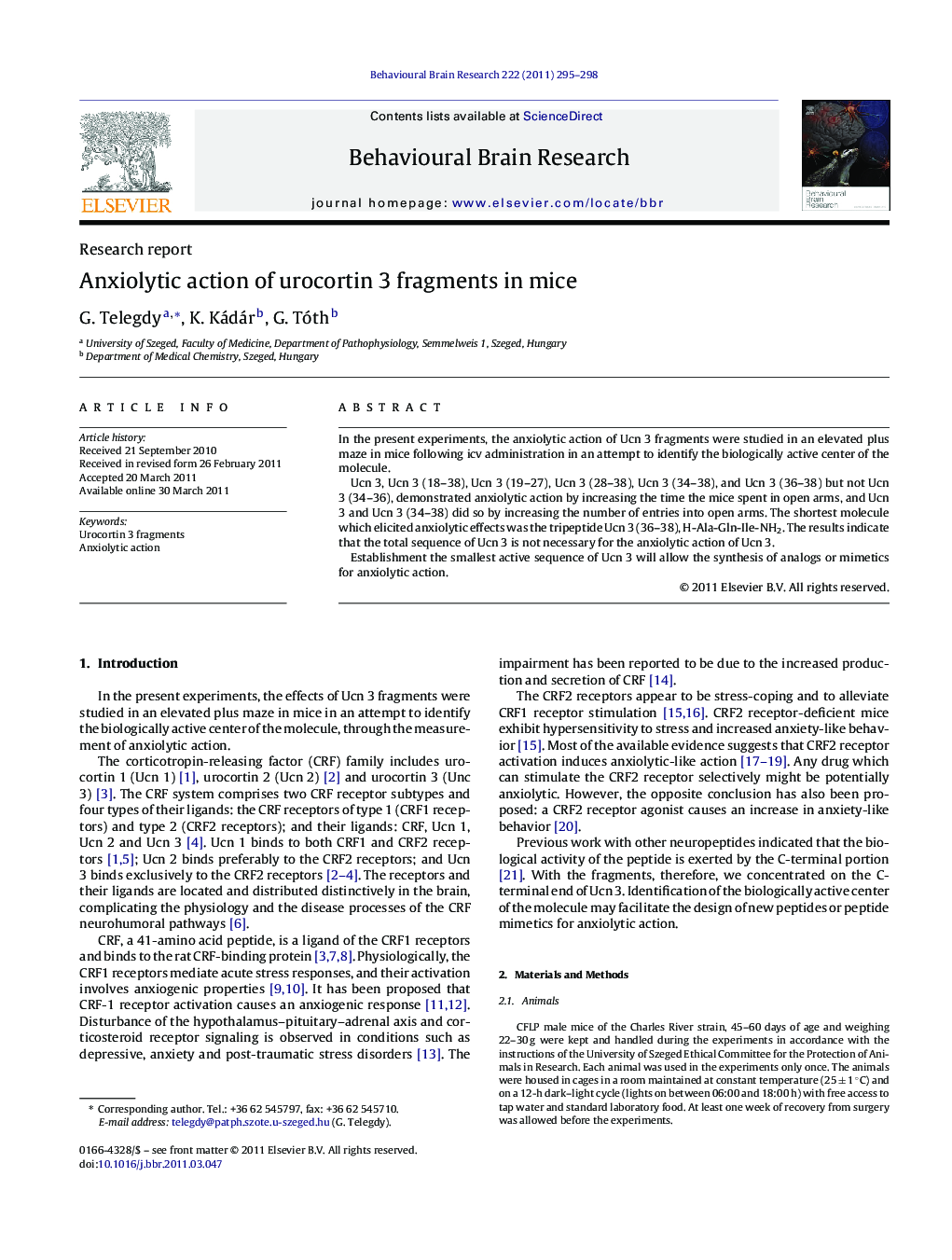| Article ID | Journal | Published Year | Pages | File Type |
|---|---|---|---|---|
| 6259722 | Behavioural Brain Research | 2011 | 4 Pages |
In the present experiments, the anxiolytic action of Ucn 3 fragments were studied in an elevated plus maze in mice following icv administration in an attempt to identify the biologically active center of the molecule.Ucn 3, Ucn 3 (18-38), Ucn 3 (19-27), Ucn 3 (28-38), Ucn 3 (34-38), and Ucn 3 (36-38) but not Ucn 3 (34-36), demonstrated anxiolytic action by increasing the time the mice spent in open arms, and Ucn 3 and Ucn 3 (34-38) did so by increasing the number of entries into open arms. The shortest molecule which elicited anxiolytic effects was the tripeptide Ucn 3 (36-38), H-Ala-Gln-Ile-NH2. The results indicate that the total sequence of Ucn 3 is not necessary for the anxiolytic action of Ucn 3.Establishment the smallest active sequence of Ucn 3 will allow the synthesis of analogs or mimetics for anxiolytic action.
⺠The anxiolytic action of six urocortin 3 (Ucn 3) fragments was studied in elevated plus maze in mice. ⺠The biological active center was the smallest tripeptide Ucn 3 (36-38). ⺠Establishment the smallest active sequence of Ucn 3 would allow the synthesis of analogs and mimetics for anxiolytic action.
